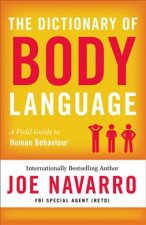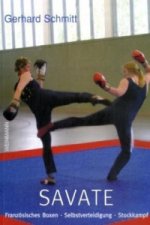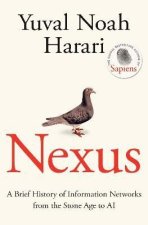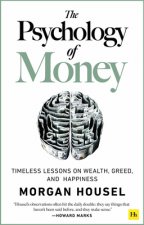
Kód: 20447895
A Comparison between "Direct Method" and Grammar "Translation Method". Different Language Teaching Methods
Autor Bernd-Peter Liegener
Seminar paper from the year 2017 in the subject English - Pedagogy, Didactics, Literature Studies, grade: 82%, , language: English, abstract: Two methods of teaching foreign languages, the "Direct Method" and the "Grammar Translat ... celý popis
- Jazyk:
 Angličtina
Angličtina - Vazba: Brožovaná
- Počet stran: 20
Nakladatelství: Grin Publishing, 2018
- Více informací o knize

Mohlo by se vám také líbit
-

The Half of It: A Memoir
396 Kč -

Monogatari Series Box Set Limited Edition
2172 Kč -

The Dictionary of Body Language
269 Kč -

Tajemna historia wyd. 2022
399 Kč -

Happiness, Volume 2
302 Kč -

Fundamentals of Creature Design
895 Kč -

Savate
407 Kč
Dárkový poukaz: Radost zaručena
- Darujte poukaz v libovolné hodnotě a my se postaráme o zbytek.
- Poukaz se vztahuje na celou naši nabídku.
- Elektronický poukaz vytisknete z e-mailu a můžete ihned darovat.
- Platnost poukazu je 12 měsíců od data vystavení.
Více informací o knize A Comparison between "Direct Method" and Grammar "Translation Method". Different Language Teaching Methods
Nákupem získáte 39 bodů
 Anotace knihy
Anotace knihy
Seminar paper from the year 2017 in the subject English - Pedagogy, Didactics, Literature Studies, grade: 82%, , language: English, abstract: Two methods of teaching foreign languages, the "Direct Method" and the "Grammar Translation Method" are described and compared. The underlying principles with main focus on acquisition of communicative skills and grammatical knowledge respectively are illustrated. Looking at possible results of either method we find that there is no gradual difference between them in the sense of better or worse, but that both have completely different targets. The suggestion is made to combine different methods in order to achieve multiple goals and to vary the emphasis according to individual goals. The most ancient and probably most fundamental controversy in language teaching is the one between "Direct Method" and "Grammar Translation Method". Both of these have totally different underlying approaches. For interested educational stakeholders or educators, there are two important questions, they should think of before looking for an appropriate method: What do I want the students to achieve? How can the learners reach this goal? One can think of different goals which should be reached by teaching a language and every teacher will want to cover most of them in their teaching. The emphasis however is very divers between the different approaches that have been developed over the years. And the most apparent difference, a completely different idea of how to teach language shows up between the two mentioned methods and their approaches respectively. This is why it is so interesting and exciting to compare these two methods and this is why I will try to tackle that task in this paper. The first and main goal of teaching a language obviously is teaching the language. But here rises already the first question: What is the language that we want the learners to learn? Are we talking about skills in oral or written language? Is our focus more on active or passive language i.e. on speaking and writing or listening and reading respectively? Are we concerned about correctness or fluency? Does correctness mean formulating grammatically correct sentences or texts, does it refer to perfect pronunciation and intonation, are we talking about style aptly adapted to the contextual situation? And does fluency have to do with the speed of writing or speaking, with the ability to develop own ideas and own formulations while speaking or writing rather than using memorized phrases? Or do we want the learners to know about the language, understanding its structure, its roots, its development?
 Parametry knihy
Parametry knihy
392 Kč
- Plný název: A Comparison between "Direct Method" and Grammar "Translation Method". Different Language Teaching Methods
- Autor: Bernd-Peter Liegener
- Jazyk:
 Angličtina
Angličtina - Vazba: Brožovaná
- Počet stran: 20
- EAN: 9783668821347
- ID: 20447895
- Nakladatelství: Grin Publishing
- Hmotnost: 44 g
- Rozměry: 210 × 148 × 1 mm
- Rok vydání: 2018
Oblíbené z jiného soudku
-

The Book of Bill
514 Kč -

Gravity Falls Journal 3
435 Kč -

Berserk Deluxe Volume 1
1033 Kč -

Pumpkin Spice Cafe
356 Kč -

Berserk Deluxe Volume 2
1033 Kč -

White Nights
86 Kč -

48 Laws Of Power
372 Kč -

It ends with us
195 Kč -

Atomic Habits
427 Kč -

A Little Life
259 Kč -

Berserk Deluxe Volume 3
1138 Kč -

The 48 Laws of Power
523 Kč -

Jujutsu Kaisen, Vol. 23
267 Kč -

Surrounded by Idiots
256 Kč -

Berserk Deluxe Volume 4
1165 Kč -

English File Fourth Edition Intermediate (Czech Edition)
611 Kč -

Gilmore Girls: The Official Advent Calendar
723 Kč -

Iron Flame
353 Kč -

The Official Stardew Valley Cookbook
561 Kč -

Chainsaw Man, Vol. 16
267 Kč -

Nexus: A Brief History of Information Networks from the Stone Age to AI
367 Kč -

A Curse For True Love
278 Kč -

Berserk Deluxe Volume 5
1115 Kč -

English File: Pre-Intermediate: Student's Book with Online Practice
611 Kč -

Little Stranger
440 Kč -

A Good Girl's Guide to Murder
180 Kč -

English File Fourth Edition Elementary Workbook with Answer Key
368 Kč -

The Husky and His White Cat Shizun: Erha He Ta de Bai Mao Shizun (Novel) Vol. 6
405 Kč -

Psychology of Money
396 Kč -

It Starts with Us
237 Kč -

Twisted Lies
215 Kč -

Berserk Deluxe Volume 6
1086 Kč -

English File Fourth Edition Pre-Intermediate Multipack A
487 Kč -

Twisted Hate
214 Kč -

Powerless
225 Kč -

Court of Mist and Fury
221 Kč -

Gravity Falls: Lost Legends
403 Kč -

English File: Intermediate. Workbook with Key
368 Kč -

English File: Intermediate: Student's Book with Online Practice
642 Kč -

Reckless
282 Kč -

Twisted Love
215 Kč -

English File Upper Intermediate Student's Book with Student Resource Centre Pack (4th)
1223 Kč -

Headway: Elementary: Student's Book with Online Practice
599 Kč -

Twisted Games
214 Kč -

Kid's Box New Generation Level 1 Activity Book with Digital Pack British English
261 Kč -

Everything I Know About Love
246 Kč -

Court of Thorns and Roses
218 Kč -

A is for Alien: An ABC Book (20th Century Studios)
147 Kč -

Vagabond (VIZBIG Edition), Vol. 1
513 Kč
Osobní odběr Praha, Brno a 12903 dalších
Copyright ©2008-24 nejlevnejsi-knihy.cz Všechna práva vyhrazenaSoukromíCookies



 Vrácení do měsíce
Vrácení do měsíce 571 999 099 (8-15.30h)
571 999 099 (8-15.30h)